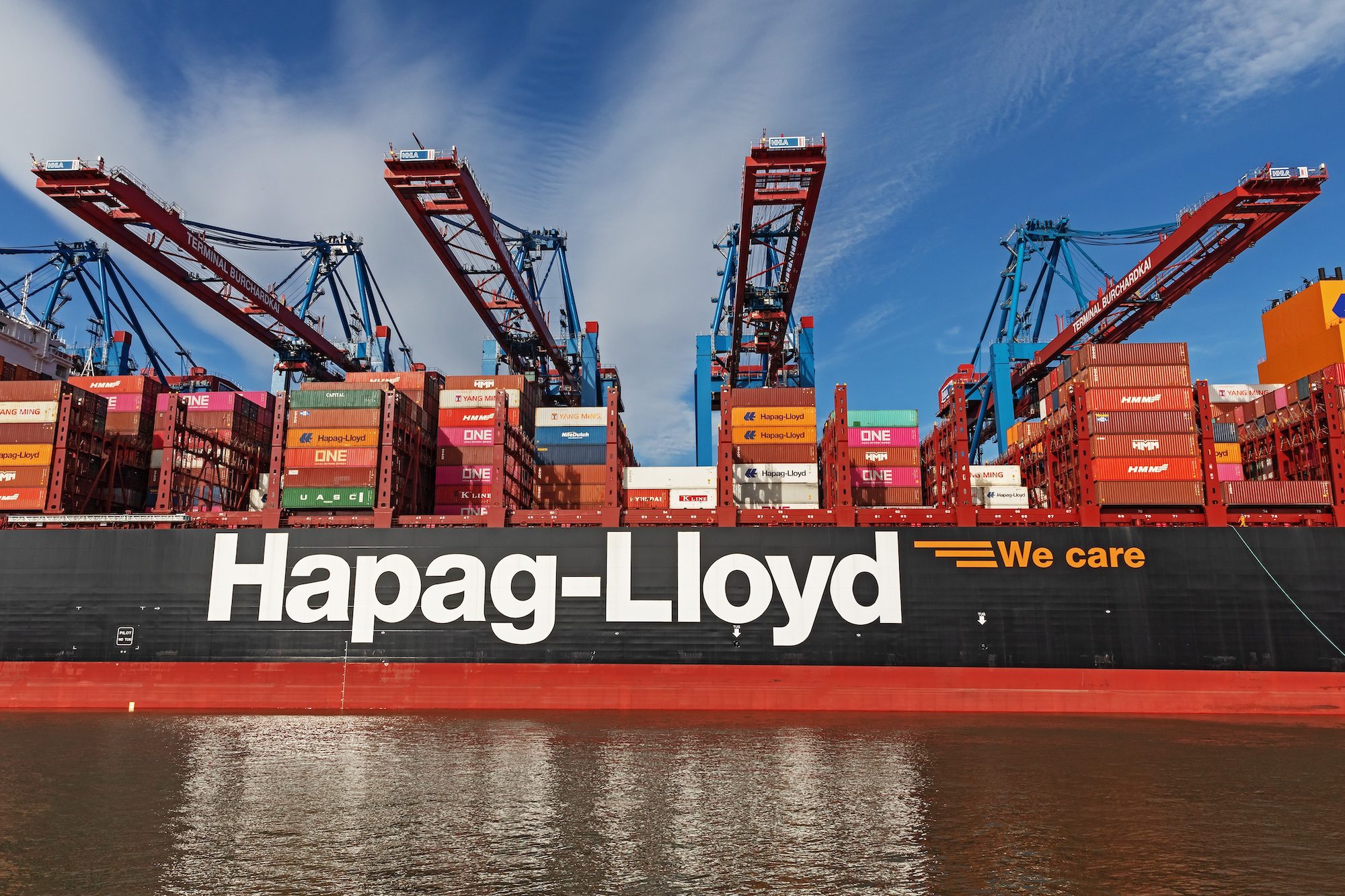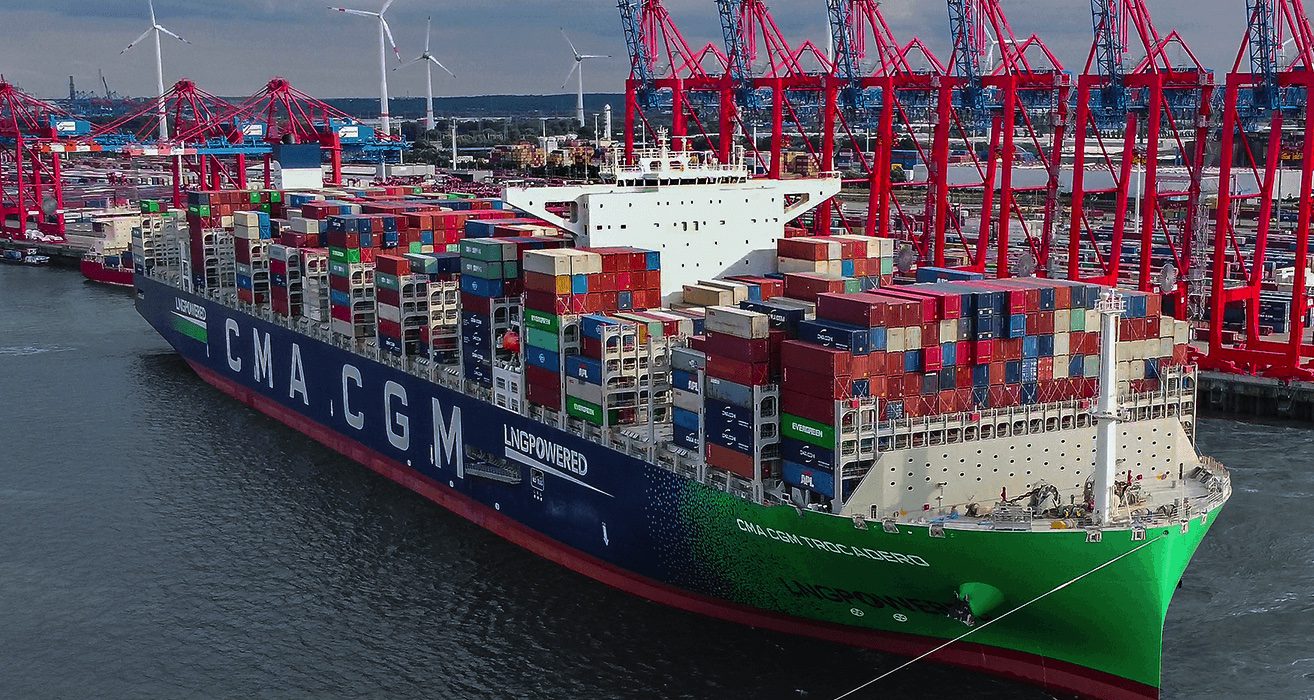Hapag-Lloyd AG delivered solid third-quarter results despite navigating volatile freight rates and a challenging geopolitical landscape, with the German shipping giant posting Group EBITDA of $2.8 billion for the first nine months of 2025.
The Hamburg-based carrier achieved Group EBIT and profit of $0.9 billion during the period, though earnings in the third quarter remained significantly below prior-year levels due to low freight rates and upward cost pressure. The company’s Liner Shipping segment generated revenues of $15.7 billion, driven by a 9 percent increase in transport volumes to 10.2 million TEU compared to the same period in 2024.
However, the average freight rate of $1,397 per TEU represented a 4.8 percent decline from the prior-year level of $1,467 per TEU. The company attributed lower EBITDA and EBIT figures partly to network transition and start-up costs for its Gemini Cooperation with Maersk, as well as congestion-related costs in various parts of the world.
“The first nine months were characterized by a highly volatile market environment, partly due to geopolitical developments and uncertainties surrounding trade policies,” said Rolf Habben Jansen, CEO of Hapag-Lloyd AG. “On the back of strong demand from our customers we delivered strong transport volume growth and achieved a solid overall result.”
Jansen emphasized the quality advantages of the Gemini network, stating it has “set a new quality benchmark in terms of schedule reliability, which clearly sets us apart from our competitors.” The CEO noted that while the company is seeing initial cost advantages from Gemini, full savings will be delivered in the course of 2026.
In a significant strategic move, Hapag-Lloyd announced plans to invest in up to 22 new vessels in the smaller vessel class segment with capacities of less than 5,000 TEU, likely through a mix of long-term charters and owned vessels. The investment marks an important milestone in the company’s modernization efforts and its commitment to achieving net-zero fleet operations by 2045.
The Terminal & Infrastructure segment showed modest growth, with revenues increasing to $375 million primarily due to a terminal acquisition in France.However, EBITDA of $110 million and EBIT of $46 million came in slightly below prior-year levels.
Looking ahead, Hapag-Lloyd’s Executive Board has narrowed its full-year 2025 earnings forecast. The company now expects Group EBITDA in the range of $3.1 to $3.6 billion and Group EBIT between $0.6 and $1.1 billion. Management cautioned that this forecast remains subject to considerable uncertainty given ongoing geopolitical challenges and volatile freight rates.
The company’s performance comes against a backdrop of mixed signals in the container shipping sector. Recent market data from Drewry showed the World Container Index decreasing 5 percent to $1,859 per 40-foot container, marking the first weekly decrease after four weeks of continuous increases following China’s Golden Week holiday. Transpacific headhaul rates experienced double-digit decreases, with Shanghai to New York rates falling 15 percent to $3,254 per 40-foot container.
Meanwhile, Hapag-Lloyd’s Gemini partner Maersk recently raised the lower end of its full-year guidance, now expecting underlying EBITDA of $9.0 to $9.5 billion. Maersk’s Ocean segment posted EBIT of $567 million in the third quarter, up from $229 million in the previous quarter, with the Gemini Cooperation enabling substantial cost savings and supporting 7 percent loaded volume growth year-over-year.
With a fleet of 305 modern container ships and total transport capacity of 2.5 million TEU, Hapag-Lloyd operates 130 liner services worldwide connecting more than 600 ports across all continents.The company employs around 14,000 people in its Liner Shipping segment and maintains 400 offices in 140 countries.
“Looking ahead, we will respond agilely to changes in global trade and maintain strict cost discipline,” Jansen said. “While doing so, we will not compromise on quality for our customers.”

 Join The Club
Join The Club











